2,2-diphenyl-1-picrylhydrazyl
Synonym(s):1,1-Diphenyl-2-picrylhydrazyl radical;2,2-Diphenyl-1-(2,4,6-trinitrophenyl)hydrazyl;DPPH;DPPH, Free Radical - CAS 1898-66-4 - Calbiochem
- CAS NO.:1898-66-4
- Empirical Formula: C18H12N5O6*
- Molecular Weight: 394.32
- MDL number: MFCD00007231
- EINECS: 217-591-8
- SAFETY DATA SHEET (SDS)
- Update Date: 2024-12-18 14:15:32

What is 2,2-diphenyl-1-picrylhydrazyl?
Chemical properties
DPPH is a common abbreviation for the organic chemical compound 2,2-diphenyl-1-picrylhydrazyl. It is a dark-colored crystalline powder composed of stable free radical molecules. DPPH has two major applications, both in laboratory research: one is a monitor of chemical reactions involving radicals, most notably it is a common antioxidant assay, and another is a standard of the position and intensity of electron paramagnetic resonance signals.
Physical properties
DPPH has several crystalline forms which differ by the lattice symmetry and melting point. The commercial powder is a mixture of phases which melts at ~130 °C. DPPH-I (m.p. 106 °C) is orthorhombic, DPPH-II (m.p. 137 °C) is amorphous and DPPH-III (m.p. 128–129 °C) is triclinic.
The Uses of 2,2-diphenyl-1-picrylhydrazyl
2,2-Diphenyl-1-picrylhydrazyl is a stable free radical molecule most commonly used as a tool to monitor chemical reactions involving radicals, most notably in antioxidant assay.
The Uses of 2,2-diphenyl-1-picrylhydrazyl
2,2-Diphenyl-1-picrylhydrazyl is used as a sensitive colorimetric free radical scavenger. It serves as a general antioxidant detector. It is utilized to monitor chemical reactions involving radicals as well as a standard of the position and intensity of electron paramagnetic resonance signals. Further, it is employed in the quantitative determination of aliphatic and aromatic thiols by indirect spectroscopy and for photometric determination of tocopherol.
What are the applications of Application
DPPH, Free Radical is a sensitive colormetric free radical scavenger
General Description
2,2-diphenyl-1-picrylhydrazyl is a free radical, which shows hydrogen acceptor ability towards antioxidants. It has a strong absorbance at 517 nm. When the radical is lost in exchange for a proton, the absorbance at 517 nm decreases proportionately, resulting in a color change from purple to yellow. Hence, it is commonly used in DPPH assay for measuring the antioxidant activity of different natural samples such as wine, fruits, herbal tea etc.
Safety
This picrylhydrazyl derivative, also known as DPPH free radical, presents as a black crystalline powder. Store in a refrigerator - this substance is heat sensitive. 1,1-Diphenyl-2-picrylhydrazyl Free Radical is incompatible with oxidizing agents, strong bases and halogens. This chemical is harmful if swallowed. It may cause allergy or asthma symptoms or breathing difficulties if inhaled and an allergic reaction on the skin.
References
[1] SIDDARTHA BALIYAN. Determination of Antioxidants by DPPH Radical Scavenging Activity and Quantitative Phytochemical Analysis of Ficus religiosa.[J]. Molecules, 2022. DOI:10.3390/molecules27041326.
[2] G. CLARKE. High Correlation of 2,2-diphenyl-1-picrylhydrazyl (DPPH) Radical Scavenging, Ferric Reducing Activity Potential and Total Phenolics Content Indicates Redundancy in Use of All Three Assays to Screen for Antioxidant Activity of Extracts of Plants from the Malaysian Rainforest[C]//2 1. 2013: 1-10. DOI:10.3390/antiox2010001.
[3] IKUO NAKANISHI Yoshimi S. Electrochemical redox behavior of 2,2-diphenyl-1-picrylhydrazyl radical solubilized by β-cyclodextrin in water[J]. Electrochemistry Communications, 2022, 134: Article 107190. DOI:10.1016/j.elecom.2021.107190.
[4] JAMES BYH BEHRENDORFF. 2,2-Diphenyl-1-picrylhydrazyl as a screening tool for recombinant monoterpene biosynthesis.[J]. Microbial Cell Factories, 2013, 12: 76. DOI:10.1186/1475-2859-12-76.
[5] J. XIE K. M S. Re-evaluation of the 2,2-Diphenyl-1-picrylhydrazyl Free Radical (DPPH) Assay for Antioxidant Activity[J]. Journal of Agricultural and Food Chemistry, 2014, 62 19: 4251-4260. DOI:10.1021/jf500180u.
Properties of 2,2-diphenyl-1-picrylhydrazyl
| Melting point: | ~135 °C (dec.)(lit.) |
| Density | 1.484 g/cm3 |
| storage temp. | 2-8°C |
| solubility | Acetonitrile (Slightly), Chloroform (Slightly), DMSO (Slightly), Methanol (Sligh |
| form | Solid |
| color | green |
| Water Solubility | Soluble in dimethyl formamide, ethanol, chloroform, ether, carbon disulfinde, acetone, oils, carbon tetrachloride, glacial acetic acid and toluene. Insoluble in water. |
| λmax | 515nm(MeOH)(lit.) |
| Merck | 14,3330 |
| BRN | 1846081 |
| Stability: | Shock Sensitive |
| EPA Substance Registry System | Hydrazyl, 2,2-diphenyl-1-(2,4,6-trinitrophenyl)- (1898-66-4) |
Safety information for 2,2-diphenyl-1-picrylhydrazyl
| Signal word | Danger |
| Pictogram(s) |
 Flame Flammables GHS02  Exclamation Mark Irritant GHS07  Health Hazard GHS08 |
| GHS Hazard Statements |
H242:Self-reactive substances and mixtures; and Organic peroxides H315:Skin corrosion/irritation H317:Sensitisation, Skin H319:Serious eye damage/eye irritation H334:Sensitisation, respiratory |
| Precautionary Statement Codes |
P210:Keep away from heat/sparks/open flames/hot surfaces. — No smoking. P235:Keep cool. P280:Wear protective gloves/protective clothing/eye protection/face protection. P370+P378:In case of fire: Use … for extinction. P403:Store in a well-ventilated place. |
Computed Descriptors for 2,2-diphenyl-1-picrylhydrazyl
2,2-diphenyl-1-picrylhydrazyl manufacturer
Suvchem
New Products
(S)-3-Aminobutanenitrile hydrochloride 4-Methylphenylacetic acid N-Boc-D-alaninol N-BOC-D/L-ALANINOL Tert-butyl bis(2-chloroethyl)carbamate 3-Morpholino-1-(4-nitrophenyl)-5,6-dihydropyridin- 2(1H)-one Furan-2,5-Dicarboxylic Acid Tropic acid S-2-CHLORO PROPIONIC ACID ETHYL ISOCYANOACETATE 2-Bromo-1,3-Bis(Dimethylamino)Trimethinium Hexafluorophosphate 4-IODO BENZOIC ACID 3-NITRO-2-METHYL ANILINE 1-(2,4-DICHLOROPHENYL) ETHANAMINE (2-Hydroxyphenyl)acetonitrile 4-Bromopyrazole 5,6-Dimethoxyindanone 2-(Cyanocyclohexyl)acetic acid 4-methoxy-3,5-dinitropyridine 1-(4-(aminomethyl)benzyl)urea hydrochloride 2-aminopropyl benzoate hydrochloride diethyl 2-(2-((tertbutoxycarbonyl)amino) ethyl)malonate tert-butyl 4- (ureidomethyl)benzylcarbamate Ethyl-2-chloro((4-methoxyphenyl)hydrazono)acetateRelated products of tetrahydrofuran
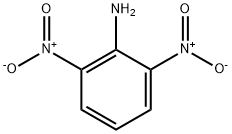
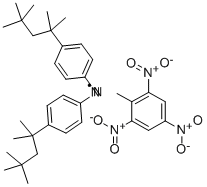

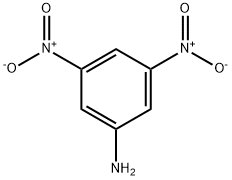

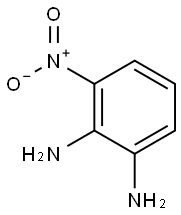
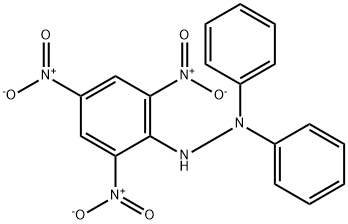
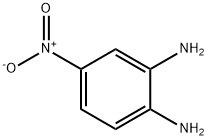
You may like
-
 2, 2-Diphenyl-1-picrylhydrazyl (Free Radical) CAS 1898-66-4View Details
2, 2-Diphenyl-1-picrylhydrazyl (Free Radical) CAS 1898-66-4View Details
1898-66-4 -
 2,2-Diphenyl-1-picrylhydrazyl (free radical) CAS 1898-66-4View Details
2,2-Diphenyl-1-picrylhydrazyl (free radical) CAS 1898-66-4View Details
1898-66-4 -
 2,2-Diphenyl-1-picrylhydrazyl CAS 1898-66-4View Details
2,2-Diphenyl-1-picrylhydrazyl CAS 1898-66-4View Details
1898-66-4 -
 1,1-Diphenyl-2-picrylhydrazyl Free Radical CAS 1898-66-4View Details
1,1-Diphenyl-2-picrylhydrazyl Free Radical CAS 1898-66-4View Details
1898-66-4 -
 2,2-Diphenyl-1-picrylhydrazyl CAS 1898-66-4View Details
2,2-Diphenyl-1-picrylhydrazyl CAS 1898-66-4View Details
1898-66-4 -
 1975-50-4 98%View Details
1975-50-4 98%View Details
1975-50-4 -
 14714-50-2 (2-Hydroxyphenyl)acetonitrile 98+View Details
14714-50-2 (2-Hydroxyphenyl)acetonitrile 98+View Details
14714-50-2 -
 118753-70-1 98+View Details
118753-70-1 98+View Details
118753-70-1